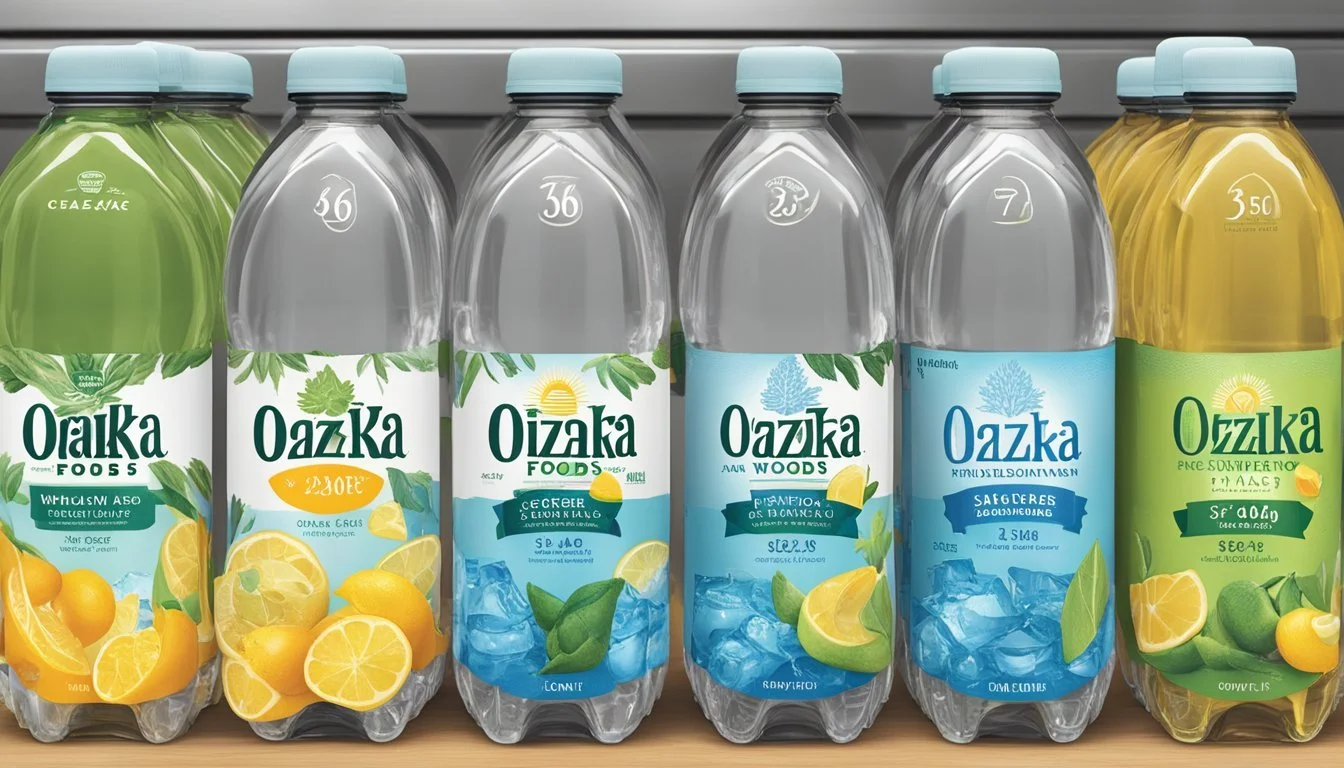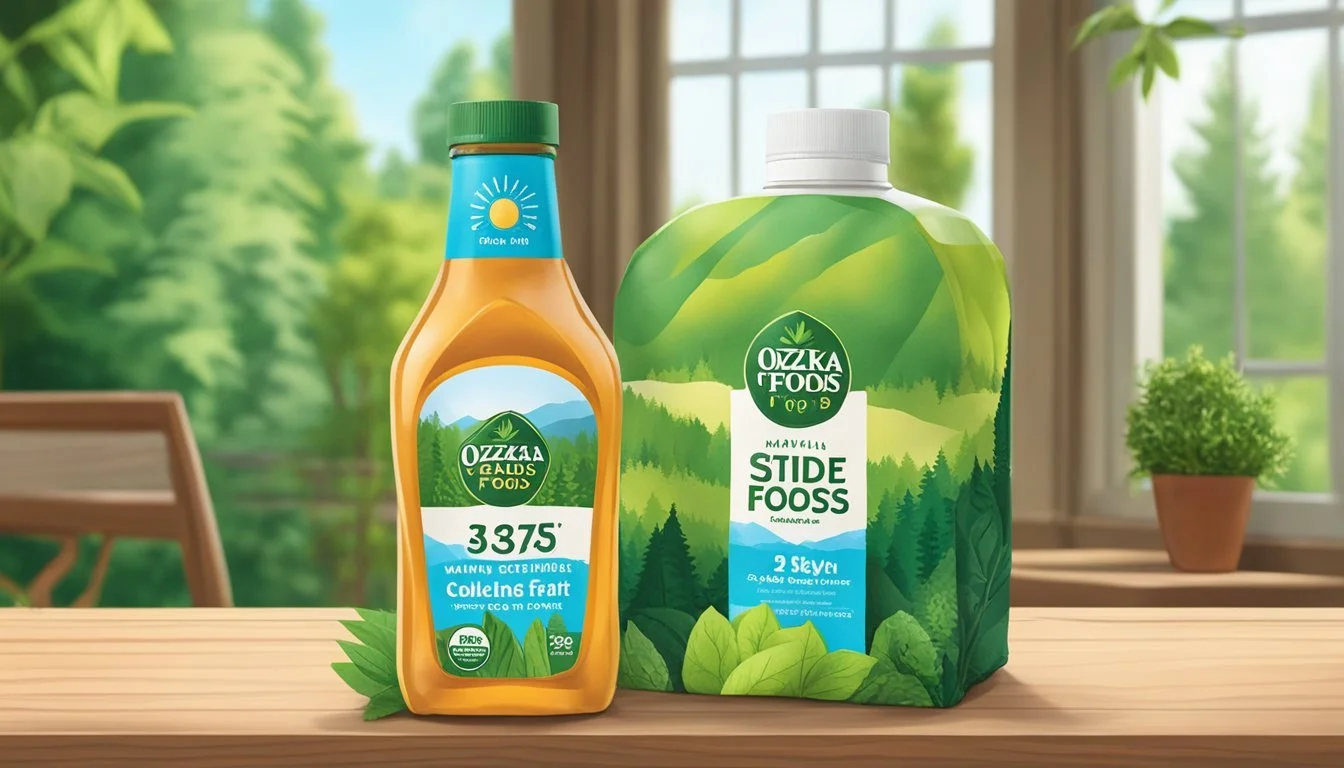Ozarka vs. Whole Foods 365
A Comprehensive Bottled Water Comparison
When choosing between Ozarka and Whole Foods 365 bottled water, various factors such as taste, price, and source come into play. Ozarka, sourced locally from Texas, often provides a flavorful hydration experience marked by its regional spring water origins. On the other hand, Whole Foods 365 offers a spring water that has been described as having a more average taste profile, sometimes perceived as slightly sour with a dry aftertaste.
Considering the environmental impact, it's worth noting that both brands are packaged in plastic bottles, contributing to pollution concerns. While Whole Foods 365 is more affordable, the quality may not meet the expectations of those preferring the fresh taste typical of Ozarka. For those prioritizing a distinct and refreshing spring water taste, Ozarka may be the preferable choice.
Ultimately, the better option depends on individual preferences and priorities. Whether it's the unique taste of Ozarka's Texas spring water or the cost-effective nature of Whole Foods 365, each brand has its own set of strengths.
Evaluating Water Quality
Understanding the quality of bottled water involves evaluating mineral content, safety standards, water sources, and taste profiles. Below, we dive into these aspects for both Ozarka and Whole Foods 365.
Mineral Content and Health Benefits
Ozarka and Whole Foods 365 bottled waters contain different minerals that contribute to their health benefits. Ozarka's water, sourced from natural springs in Texas, typically contains calcium, magnesium, and potassium. These minerals are essential for maintaining healthy bones, muscle function, and electrolyte balance.
Whole Foods 365 also offers natural spring water but may have varying mineral content depending on the specific batch and source. It's important for consumers to check labels to understand the specific nutrients they are ingesting.
Safety Standards and Contaminants
Both brands must adhere to strict FDA and EPA regulations for bottled water safety. These regulations limit the presence of harmful substances such as arsenic, lead, cadmium, and heavy metals. Recent reviews have highlighted concerns over PFAS chemicals in some bottled waters. However, comprehensive testing by Consumer Reports did not find significant levels of contaminants in Ozarka or Whole Foods 365.
This ensures that both brands provide safe drinking water to consumers, free from dangerous contaminants.
Water Source and Origin
Ozarka water is sourced from natural springs in Texas. This regional sourcing can contribute to its unique mineral composition and taste. Each spring source ensures the water is naturally filtered and rich in local minerals.
Whole Foods 365, on the other hand, sources its spring water from multiple locations across the United States. This variability can result in differences in mineral content and taste profile between batches. Checking the label for the exact source can provide more insight into the specific origins of a particular bottle.
Taste Profile Comparisons
Taste is a subjective but critical aspect of choosing bottled water. Ozarka's taste is noted for its clean, crisp profile, attributed to its specific mineral blend from Texas springs. Water sommeliers often highlight a slight sweetness and smoothness in Ozarka water, making it a preferred choice for many consumers.
Whole Foods 365 spring water, while also natural, has been described as having a more neutral taste. Some reviews find it lacks the distinctiveness of other premium spring waters. Its variability in source locations can lead to subtle differences in flavor profile between batches. When comparing the two, taste tests usually favor Ozarka for its consistent and pleasant flavor.
Environmental Impact
The environmental impact of bottled water involves factors such as the bottling process, sustainability efforts, and plastic waste management. Both Whole Foods 365 and Ozarka have different approaches when it comes to these aspects.
Bottling Process and Sustainability
Whole Foods 365 emphasizes sourcing their water from natural springs. They strive to ensure their bottling process is environmentally friendly. This includes employing methods to minimize the use of nonrenewable resources. Their packaging includes BPA-free plastic bottles, highlighting a commitment to consumer health and environmental concerns.
Ozarka, on the other hand, also sources its water from natural springs primarily located in Texas. They focus on sustainable water management practices. Ozarka's bottling process aims to minimize the environmental footprint by improving efficiency and reducing waste. Both brands have taken commendable steps to prioritize sustainability in their bottling process.
Water Brands and Plastic Waste
Plastic waste remains a critical environmental challenge for bottled water brands. Whole Foods 365 utilizes BPA-free plastic bottles, which are designed for recycling. They often encourage consumers to participate in recycling programs to reduce plastic waste. Despite this, the reliance on plastic still contributes significantly to environmental pollution if not properly managed.
Ozarka's approach similarly involves the use of plastic bottles, but they have explored options such as lightweighting their bottles to use less plastic. They participate in community recycling education initiatives to ensure consumers properly dispose of their bottles. While both brands are taking steps towards reducing plastic waste, the effectiveness of these measures largely depends on consumer behavior and broader recycling infrastructure.
Both Whole Foods 365 and Ozarka are aware of the environmental challenges associated with plastic waste and have implemented strategies to address them.
Variety and Selection
When comparing Ozarka and Whole Foods 365, it's essential to examine the variety and selection each brand offers. Each brand extends its portfolio to cater to different consumer preferences, such as flavored options and packaging types.
Flavored and Enhanced Options
Ozarka prominently offers natural spring water, but it also extends its variety to include lightly flavored options. These flavors often include hints of natural fruit, catering to those who prefer a subtle taste.
Whole Foods 365, conversely, focuses more on plain spring water but offers a few enhanced waters. These may include added minerals for taste and health benefits. Although it lacks a wide array of flavors, it does offer some options with added electrolytes.
Packaging and Presentation
Ozarka uses primarily plastic bottles, available in various sizes from small single-serve bottles to larger multi-liter options. Most of its packaging is BPA-free, ensuring safety for consumers. The brand focuses on convenience, making their bottles easy to carry.
Whole Foods 365, on the other hand, often provides options in both plastic and glass bottles. This allows consumers concerned about plastic usage to opt for a more environmentally-friendly choice. Their packaging tends to be minimalist and branded towards health-conscious buyers.
Both brands emphasize easy-to-carry packaging, but Whole Foods 365 provides a slight edge with its glass bottle option for eco-conscious consumers.
Brand History and Reputation
Whole Foods 365 and Ozarka have distinct histories and reputations in the bottled water market, influencing their market presence and consumer trust. Here we explore the key factors behind their market position and adherence to regulatory standards.
Market Presence and Customer Loyalty
Whole Foods 365 has earned a reputation for providing reliable, affordable water under its established grocery brand. Known for quality standards, it attracts health-conscious consumers who trust Whole Foods' broader commitment to natural products.
Ozarka, sourcing locally from Texas, has built a strong regional presence. Consumers often appreciate its emphasis on natural spring water and consistent taste. Ozarka's customer base is loyal, drawn to the brand's perceived purity and Texas roots.
Regulatory Compliance and Voluntary Guidance
Both Whole Foods 365 and Ozarka adhere to the stringent guidelines set by the FDA and EPA. Their compliance ensures that bottled water meets safety and quality standards.
Additionally, Whole Foods often goes beyond federal requirements, aligning its products with voluntary guidance from entities like the International Bottled Water Association. Ozarka, owned by Nestlé, follows extensive safety protocols, reflecting industry best practices.
These rigorous standards help bolster consumer confidence and trust in these brands.
Consumer Insights
When comparing Ozarka and Whole Foods 365 bottled waters, it is essential to consider consumer perspectives on flavor, ingredients, and cost effectiveness. These factors significantly influence buying decisions and brand preferences.
Flavor and Ingredients
Ozarka's water is sourced from Texas and maintains a fresh, crisp taste that many consumers appreciate. It is known for its natural minerals and lack of any artificial additives. In contrast, Whole Foods 365 water, although labeled as spring water, often receives feedback for having a slightly sour note and dry aftertaste. This difference in flavor can be attributed to the varied mineral compositions and source locations.
Ozarka does not contain added fluoride or sodium, making it a preferred option for those concerned with purity and natural hydration. Meanwhile, Whole Foods 365 focuses on providing bottled water with minimal processing and no detectable levels of toxins like chlorine, aligning with health-conscious consumers' priorities.
Cost vs. Value
Ozarka offers regional pricing, meaning its cost can vary based on the location. However, it maintains competitive pricing due to availability in large quantities, which lowers the cost per bottle. Consumers often find it to be a reasonable option for daily hydration needs, giving it a solid value proposition.
Whole Foods 365, priced at around $0.69 per bottle, positions itself in the mid-range market. While it may not be the cheapest, the brand focuses on quality and ethical sourcing, factors that appeal to Whole Foods' customer base. The value of Whole Foods 365 water lies in its balance of cost, quality, and ethical considerations.
Conclusion and Final Thoughts
When comparing Ozarka and Whole Foods 365 bottled water, several aspects come into play.
Ozarka sources its water locally from Texas. This gives it a regional touch that many consumers appreciate. Known for its clean taste, Ozarka has a reputation built on the quality of its water.
Whole Foods 365, on the other hand, is technically a spring water but tends to taste similar to some purified waters. It's often described as having a dry aftertaste. Priced affordably, it offers significant value for budget-conscious consumers.
From a quality perspective, both brands have their strengths. Ozarka's local sourcing provides consistency, while Whole Foods 365 offers an accessible option at a lower cost.
In terms of environmental impact, the packaging and sourcing methods of both brands are critical considerations. Ozarka prides itself on sustainable sourcing practices, which may appeal to eco-conscious buyers. Information on Whole Foods 365's environmental practices is less detailed, but the brand is associated with Whole Foods Market's broader sustainability commitments.
For those prioritizing taste, Ozarka seems to have a slight edge, with consumers often preferring its cleaner taste over the slightly sour and dry aftertaste of Whole Foods 365.
Ultimately, the choice between Ozarka and Whole Foods 365 may come down to individual preferences regarding taste, cost, and environmental impact. Both brands offer reliable options for those seeking quality drinking water.
More About Ozarka
Mountain Valley Spring Water vs Ozarka: Which Bottled Water is Better?
Ozarka vs Kirkland Signature: Which Bottled Water is Better?
Ozarka vs Richard's Rainwater: Which Bottled Water is Better?
Ozarka vs Whole Foods Italian Still Mineral water: Which Bottled Water is Better?
More About Whole Foods 365
Acqua Pana vs Whole Foods 365: Which Bottled Water is Better?
Alkaline88 vs Whole Foods 365: Which Bottled Water is Better?
Antipodes vs Whole Foods 365: Which Bottled Water is Better?
Aqua Carpatica vs Whole Foods 365: Which Bottled Water is Better?
Arrowhead vs Whole Foods 365: Which Bottled Water is Better?
Big Chill vs Whole Foods 365: Which Bottled Water is Better?
Boxed Water vs Whole Foods 365: Which Bottled Water is Better?
Cascade Mountain vs Whole Foods 365: Which Bottled Water is Better?
Castle Rock vs Whole Foods 365: Which Bottled Water is Better?
Core Hydration vs Whole Foods 365: Which Bottled Water is Better?
Crystal Geyser vs Whole Foods 365: Which Bottled Water is Better?
Deer Park vs Whole Foods 365: Which Bottled Water is Better?
Hawaii Volcanic vs Whole Foods 365: Which Bottled Water is Better?
Hawaiian Springs vs Whole Foods 365: Which Bottled Water is Better?
Ice Mountain vs Whole Foods 365: Which Bottled Water is Better?
Icelandic Glacial vs Whole Foods 365: Which Bottled Water is Better?
Just Water vs Whole Foods 365: Which Bottled Water is Better?
Liquid Death vs Whole Foods 365: Which Bottled Water is Better?
Mountain Valley Spring Water vs Whole Foods 365: Which Bottled Water is Better?
Nestle Pure Life vs Whole Foods 365: Which Bottled Water is Better?
Open Water vs Whole Foods 365: Which Bottled Water is Better?
Poland Spring vs Whole Foods 365: Which Bottled Water is Better?
Pure Life vs Whole Foods 365: Which Bottled Water is Better?
Purely Sedona vs Whole Foods 365: Which Bottled Water is Better?
Richard's Rainwater vs Whole Foods 365: Which Bottled Water is Better?
San Pellegrino vs Whole Foods 365: Which Bottled Water is Better?
Simple Truth vs Whole Foods 365: Which Bottled Water is Better?
Smartwater vs Whole Foods 365: Which Bottled Water is Better?
Solan de Cabras vs Whole Foods 365: Which Bottled Water is Better?
Talking Rain AQA vs Whole Foods 365: Which Bottled Water is Better?
Topo Chico vs Whole Foods 365: Which Bottled Water is Better?
Weird Water vs Whole Foods 365: Which Bottled Water is Better?
Whole Foods 365 vs 1907water: Which Bottled Water is Better?
Whole Foods 365 vs BodyArmor: Which Bottled Water is Better?
Whole Foods 365 vs CBD Living: Which Bottled Water is Better?
Whole Foods 365 vs Crystal Lake: Which Bottled Water is Better?
Whole Foods 365 vs Essence pH10: Which Bottled Water is Better?
Whole Foods 365 vs Kirkland Signature: Which Bottled Water is Better?
Whole Foods 365 vs Proud Source: Which Bottled Water is Better?
Whole Foods Italian Still Mineral water vs Whole Foods 365: Which Bottled Water is Better?
Zephyrhills vs Whole Foods 365: Which Bottled Water is Better?







